- Choosing the Right Location
- Preparing the Soil
- Selecting the Hyssop Variety
- 1. Hyssopus officinalis
- 2. Hyssopus officinalis albus
- 3. Hyssopus officinalis roseus
- 4. Hyssopus officinalis nana
- Planting Hyssop Seeds or Transplants
- Planting Hyssop Seeds
- Transplanting Hyssop Seedlings
- Watering and Fertilizing Hyssop
- Watering Hyssop
- Fertilizing Hyssop
- Pruning and Harvesting Hyssop
- Pruning Hyssop
- Harvesting Hyssop
- Common Pests and Diseases
- Pests:
- Diseases:
- Culinary and Medicinal Uses of Hyssop
- Culinary Uses
- Medicinal Uses
- Precautions
- “Question-Answer”
- What is hyssop?
- Can hyssop be grown in a vegetable garden?
- What are the tips for growing hyssop in a vegetable garden?
- What are the properties of hyssop?
- How do I harvest hyssop?
- Can I use hyssop for cooking?
- Are there any precautions to consider when using hyssop?
- “Video” New Vegetable Garden: How To Get Started
If you’re looking to spruce up your vegetable garden with a beautiful herb that also offers numerous health benefits, look no further than hyssop. This vibrant and aromatic plant is not only a great addition to any garden, but it also boasts a rich history and a wide range of uses.
Hyssop, scientifically known as Hyssopus officinalis, is a member of the mint family and is native to the Mediterranean region. It has been cultivated for centuries for its culinary, medicinal, and decorative purposes. In the garden, hyssop adds a splash of color with its vibrant purple flowers and bright green leaves.
One of the main benefits of growing hyssop is its ability to attract bees, butterflies, and other pollinators. The flowers are rich in nectar and provide a valuable food source for these creatures. Additionally, the strong aroma of hyssop can help deter pests, making it a beneficial companion plant for your vegetable garden.
TIP: When planting hyssop in your vegetable garden, choose a sunny location with well-draining soil. Hyssop thrives in full sun and can tolerate a wide range of soil conditions. It’s also a good idea to provide some support for taller varieties, as they tend to become top-heavy.
Hyssop leaves and flowers are not only beautiful but also have a variety of culinary uses. The leaves can be used fresh or dried to add flavor to salads, soups, stews, and teas. Its intense aroma and taste make it a popular choice for seasoning various dishes. Moreover, hyssop is known for its medicinal properties, particularly its ability to support respiratory health and aid digestion.
Choosing the Right Location
When growing hyssop in your vegetable garden, choosing the right location is crucial for its success. Hyssop is a Mediterranean herb that requires full sun to thrive, so it’s important to select a spot that receives at least 6-8 hours of direct sunlight every day.
In addition to sunlight, hyssop also prefers well-drained soil. It does not tolerate excessive moisture and may develop root rot if left in wet conditions for extended periods. Therefore, it’s recommended to avoid planting hyssop in areas with poor drainage or where water tends to accumulate.
Furthermore, hyssop is a relatively compact plant that can reach a height of about 2-3 feet. As such, it’s important to consider its size and provide sufficient space for growth. Make sure to plant hyssop in a location where it won’t be overshadowed or crowded by taller plants.
Lastly, hyssop is known to attract a variety of beneficial insects, such as bees and butterflies, which help with pollination and pest control. To maximize the benefits of these pollinators, it’s recommended to plant hyssop near other flowering plants or vegetables that require pollination.
By choosing the right location for your hyssop plants, you can ensure that they receive the necessary sunlight and drainage while also attracting beneficial insects to your vegetable garden.
Preparing the Soil
Before planting hyssop in your vegetable garden, it’s important to prepare the soil to provide the best growing conditions for the herb. Here are some steps to follow:
- Clear the area: Start by clearing the area of any weeds or debris. Remove rocks, sticks, and other obstacles that may hinder the growth of hyssop.
- Loosen the soil: Use a garden fork or a tiller to loosen the soil. This will allow for better drainage and root penetration.
- Amend the soil: Hyssop prefers well-draining soil with a pH level between 6.0 and 8.0. If your soil is too acidic, add lime to raise the pH level. If it’s too alkaline, add compost or sulfur to lower the pH level.
- Add organic matter: Incorporate organic matter, such as compost or well-rotted manure, into the soil. This will improve soil structure, fertility, and moisture retention.
- Level the soil: Use a rake to level the soil surface. This will provide a smooth and even planting area for the hyssop.
Following these steps will create a favorable environment for hyssop to thrive in your vegetable garden. It’s important to provide the herb with the right soil conditions to ensure healthy growth and maximum yield.
Selecting the Hyssop Variety
When growing hyssop in your vegetable garden, it’s important to choose the right variety that suits your needs. Here are some common hyssop varieties to consider:
1. Hyssopus officinalis
This is the most common variety of hyssop and is often referred to as the “true” hyssop. It has a strong aroma and is commonly used for culinary purposes. Hyssopus officinalis blooms in shades of purple or blue.
2. Hyssopus officinalis albus
Also known as white hyssop, this variety has white flowers instead of the typical purple or blue. It has a milder flavor compared to the common hyssop.
3. Hyssopus officinalis roseus
This variety of hyssop, commonly known as pink hyssop, produces beautiful pink flowers. It has a similar flavor to the common hyssop but adds a touch of color to your garden.
4. Hyssopus officinalis nana
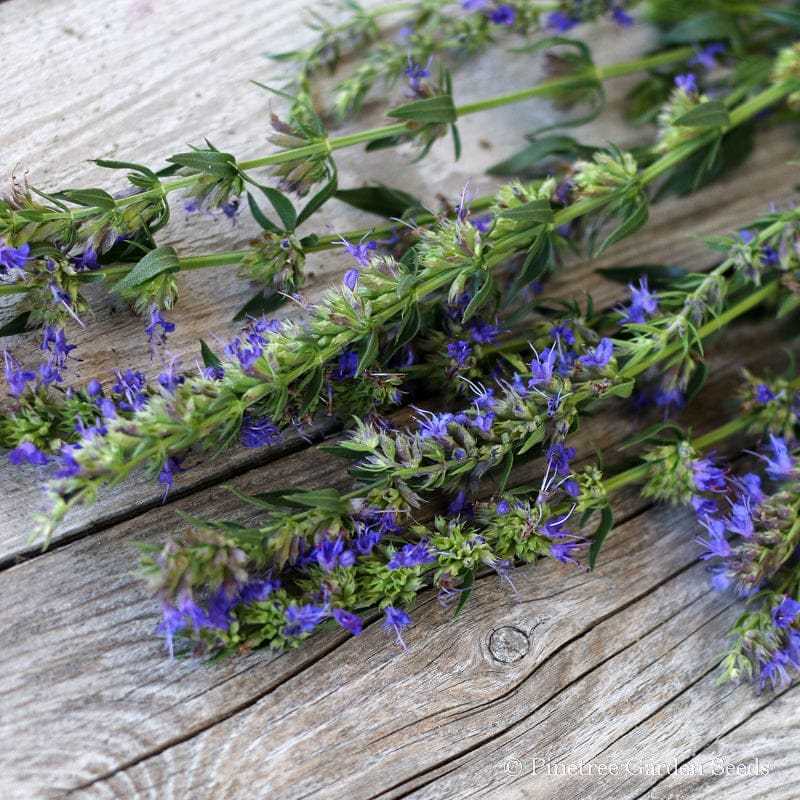
Also called dwarf hyssop, this variety is smaller in size compared to the common hyssop. It is ideal for container gardening or for smaller garden spaces.
When choosing a hyssop variety, consider factors such as the flavor you prefer, the color you desire in your garden, and the available space in your garden or containers.
| Variety | Flower Color | Flavor | Size |
|---|---|---|---|
| Hyssopus officinalis | Purple or blue | Strong | Medium |
| Hyssopus officinalis albus | White | Mild | Medium |
| Hyssopus officinalis roseus | Pink | Similar to common hyssop | Medium |
| Hyssopus officinalis nana | Purple or blue | Strong | Small |
Choose the hyssop variety that best meets your preferences and garden requirements, and enjoy the wonderful benefits of growing this versatile herb.
Planting Hyssop Seeds or Transplants
When it comes to planting hyssop in your vegetable garden, you have two options: planting seeds or transplanting seedlings. Here are some tips to help you get started:
Planting Hyssop Seeds
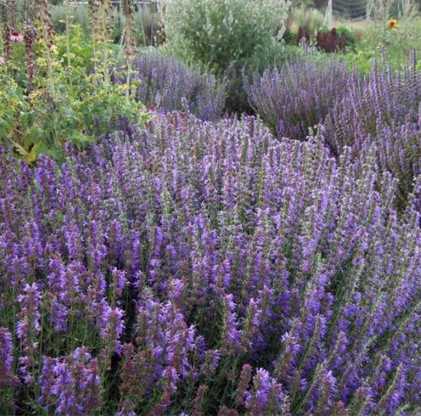
- Choose a sunny spot in your garden with well-drained soil.
- Prepare the soil by removing any weeds and loosening it with a garden fork or tiller.
- Sow hyssop seeds directly into the prepared soil, following the package instructions for spacing and depth.
- Water the soil lightly after sowing the seeds to ensure good seed-to-soil contact.
- Keep the soil moist but not waterlogged while waiting for the seeds to germinate, which typically takes 7-14 days.
- Thin the seedlings to the recommended spacing once they have developed a few true leaves.
Transplanting Hyssop Seedlings
- Start hyssop seeds indoors about 6-8 weeks before the last frost date in your area.
- Use seed-starting trays or small pots filled with seed-starting mix.
- Sow one or two seeds per cell or pot, and cover them lightly with soil.
- Water the soil well and place the trays or pots in a warm spot with indirect sunlight.
- Once the seedlings have developed a good root system and are about 4-6 inches tall, they are ready to be transplanted.
- Choose a sunny spot in your garden with well-drained soil.
- Dig a hole for each seedling, making sure it is deep enough to accommodate the entire root system.
- Gently remove the seedlings from the trays or pots, and place them in the prepared holes.
- Backfill the holes with soil, firming it gently around the seedlings.
- Water the transplanted seedlings thoroughly to help them establish in their new location.
Whether you choose to plant hyssop seeds or transplant seedlings, make sure to provide adequate water and regular care to ensure healthy growth. With proper planting and care, you can enjoy this aromatic herb in your vegetable garden for years to come.
Watering and Fertilizing Hyssop
Proper watering and fertilization are essential for the healthy growth and development of hyssop plants in your vegetable garden. Here are some tips to help you provide the best care for your hyssop:
Watering Hyssop
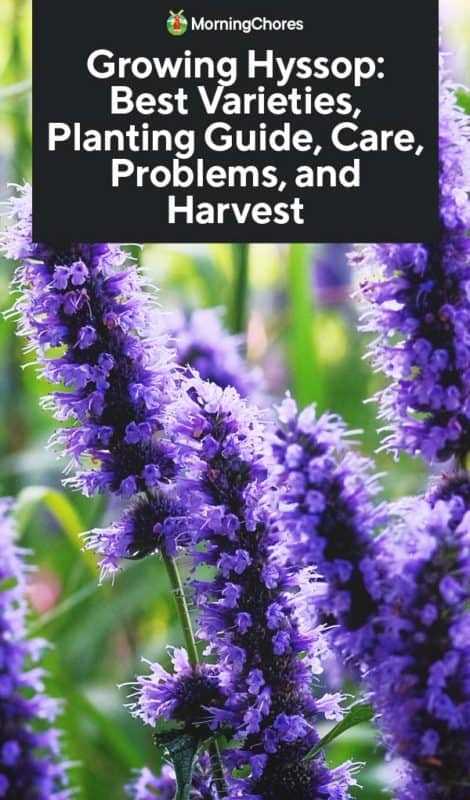
- Hyssop plants prefer well-draining soil, so avoid overwatering, as this can lead to root rot.
- Water hyssop plants deeply once a week, especially during dry periods, allowing the soil to dry out slightly between waterings.
- Use a watering can or a hose with a gentle nozzle to avoid damaging the delicate foliage of the hyssop plants.
- Water the base of the plant rather than overhead to prevent the leaves from getting wet, which can lead to disease.
Fertilizing Hyssop
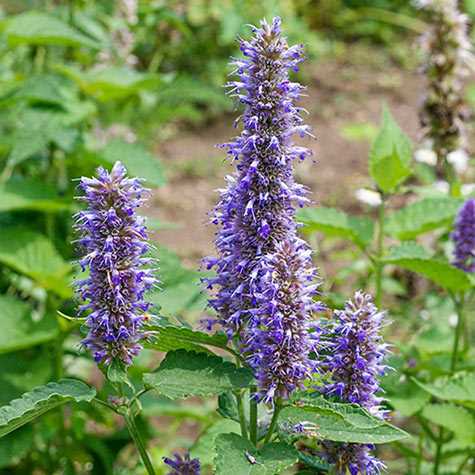
- Hyssop plants don’t require heavy fertilization and can grow well in moderately fertile soil.
- Before planting hyssop, incorporate organic matter such as compost or aged manure into the soil to improve its fertility.
- You can also use a balanced slow-release fertilizer, applying it according to the package instructions.
- Avoid using excessive amounts of nitrogen fertilizer, as this can promote excessive leaf growth at the expense of flower production.
By following these watering and fertilizing guidelines, you can ensure that your hyssop plants thrive and provide you with their aromatic leaves and beautiful flowers throughout the growing season.
Pruning and Harvesting Hyssop
Pruning and harvesting hyssop is an important part of maintaining a healthy and productive herb garden. Proper pruning techniques will help your hyssop plants grow stronger and prevent them from becoming overcrowded.
Pruning Hyssop
To prune hyssop, you will need a pair of clean, sharp pruning shears or scissors. Follow these steps to prune your hyssop plants:
- Start pruning in late spring or early summer, when the hyssop plant has finished flowering.
- Look for dead or damaged stems and remove them by cutting them close to the base of the plant.
- Trim back any long or straggly stems to encourage bushier growth.
- Prune about one-third of the plant’s length, making sure to cut just above a leaf node or branching point.
- Remove any overcrowded stems to improve air circulation and reduce the risk of disease.
- After pruning, give the hyssop plant a thorough watering to help it recover.
Harvesting Hyssop
Hyssop can be harvested for both culinary and medicinal purposes. Here are some tips for harvesting hyssop:
- Wait until the hyssop plant is at least one year old before harvesting. This will allow the plant to establish itself properly.
- Harvest hyssop leaves and flowers by cutting them with clean, sharp gardening shears.
- For culinary use, harvest the leaves and use them fresh or dried. The leaves can be added to soups, stews, salads, and herbal teas.
- For medicinal use, harvest the flowers when they are in full bloom. Dry the flowers in a dark, well-ventilated area and store them in an airtight container.
- Harvest hyssop in the morning, after the dew has dried but before the heat of the day.
- Remember to leave enough foliage on the plant to ensure its continued growth and health.
Pruning and harvesting hyssop will not only help keep your herb garden looking tidy and productive, but it will also promote the overall health and longevity of your hyssop plants.
Common Pests and Diseases
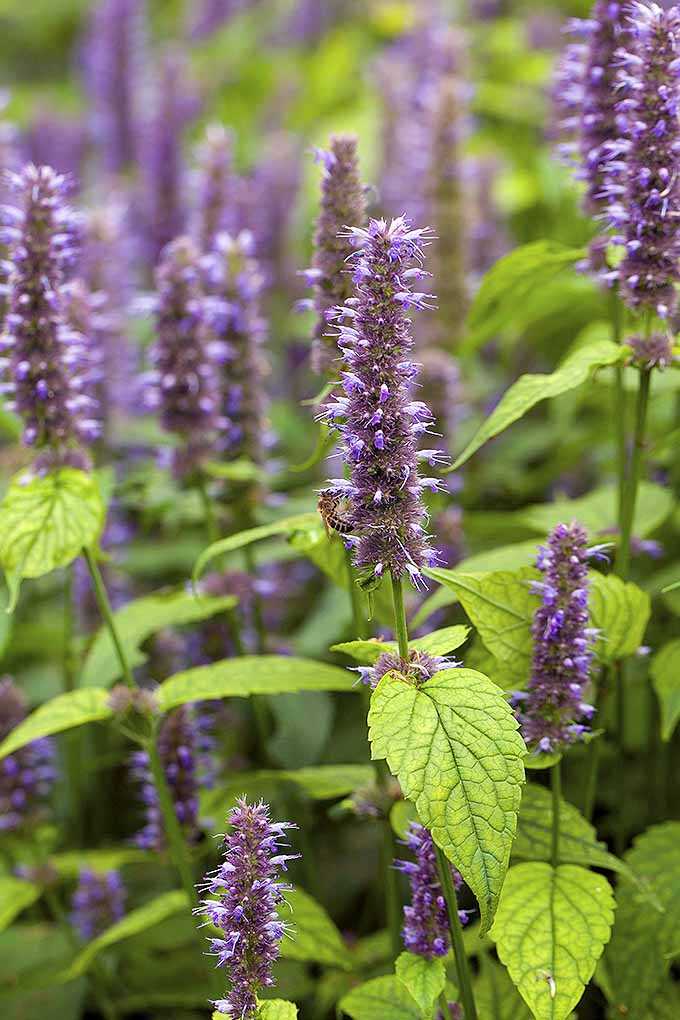
While hyssop is generally a hardy plant, it can still be susceptible to certain pests and diseases. Here are some common ones to watch out for:
Pests:
- Aphids: These small insects can suck the sap from hyssop leaves and cause stunted growth. Regularly inspect your plants for aphids and use insecticidal soap or a strong jet of water to control them.
- Spider Mites: These tiny pests can cause yellowing leaves and webs on the plant. Remove infested leaves and use insecticidal soap or neem oil to manage spider mites.
- Whiteflies: These small, white insects can cause yellowing leaves and sticky honeydew on the plant. Use yellow sticky traps or insecticidal soap to control whiteflies.
- Cabbage Loopers: These green caterpillars can feed on hyssop leaves, causing damage. Handpick them off or use Bacillus thuringiensis (BT) to control cabbage loopers.
Diseases:
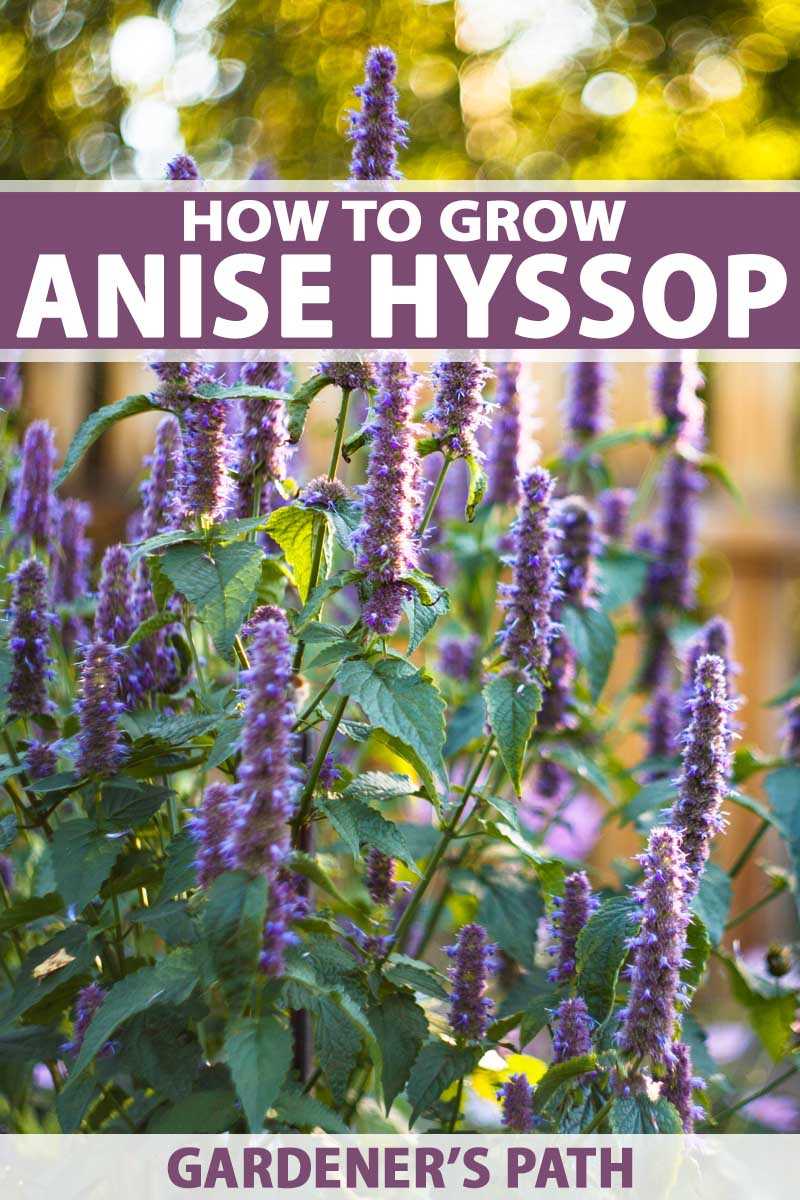
- Powdery Mildew: This fungal disease appears as white powdery patches on the leaves. To prevent powdery mildew, ensure good air circulation around plants and avoid watering from above.
- Root Rot: Overwatering and poorly drained soil can lead to root rot. Make sure the soil is well-draining and avoid overwatering.
- Leaf Spot: This fungal disease causes dark spots on the leaves. Remove infected leaves and avoid overhead watering to prevent leaf spot.
- Downy Mildew: Downy mildew appears as yellow patches on leaves with a fuzzy growth on the underside. Improve air circulation and remove infected leaves to manage downy mildew.
By keeping an eye out for these pests and diseases and taking appropriate measures, you can ensure your hyssop plants stay healthy and productive throughout the growing season.
Culinary and Medicinal Uses of Hyssop
Culinary Uses
- Hyssop leaves can be used in cooking to add a savory, mint-like flavor to dishes.
- The leaves can be used fresh or dried. When dried, they have a more concentrated flavor.
- Hyssop can be added to soups, stews, and sauces to enhance the taste.
- It can also be used as a flavoring agent in marinades and dressings.
- In some Mediterranean cuisines, hyssop is used to flavor liqueurs, such as Chartreuse.
Medicinal Uses
- In traditional medicine, hyssop has been used for centuries for its medicinal properties.
- Hyssop is known for its expectorant properties, making it useful for treating respiratory conditions such as coughs, bronchitis, and asthma.
- It can also help relieve symptoms of indigestion and bloating.
- Hyssop has antibacterial and antiviral properties, which may help boost the immune system and fight off infections.
- It can also be used topically as an antiseptic for wounds and cuts.
- Some studies suggest that hyssop may have anti-inflammatory and antioxidant effects, but more research is needed to confirm these benefits.
Precautions
While hyssop has many potential health benefits, it should be used with caution. It may cause allergic reactions in some individuals, especially those who are sensitive to plants in the mint family. Pregnant or breastfeeding women should avoid using hyssop, as it may have uterine-stimulating effects. It is always best to consult with a healthcare professional before using hyssop for medicinal purposes.
“Question-Answer”
What is hyssop?
Hyssop is a versatile herb that is commonly used in cooking, aromatherapy, and traditional medicine.
Can hyssop be grown in a vegetable garden?
Yes, hyssop can be grown in a vegetable garden alongside other vegetables and herbs.
What are the tips for growing hyssop in a vegetable garden?
Some tips for growing hyssop in a vegetable garden include choosing a sunny location, providing well-drained soil, watering regularly, and pruning to maintain plant health.
What are the properties of hyssop?
Hyssop has various properties, including being antimicrobial, antiviral, expectorant, and anti-inflammatory. It is also known to aid digestion and boost the immune system.
How do I harvest hyssop?
To harvest hyssop, you can cut the stems just above the leaves and use them fresh or dry them for later use. It is best to harvest hyssop in the morning when the essential oils are most concentrated.
Can I use hyssop for cooking?
Yes, hyssop can be used for cooking. It has a strong, slightly bitter flavor that pairs well with poultry, fish, and vegetables. It can be used fresh or dried.
Are there any precautions to consider when using hyssop?
Yes, pregnant women should avoid using hyssop as it may stimulate the uterus. It is also recommended to consult a healthcare professional before using hyssop as a medicinal herb.







